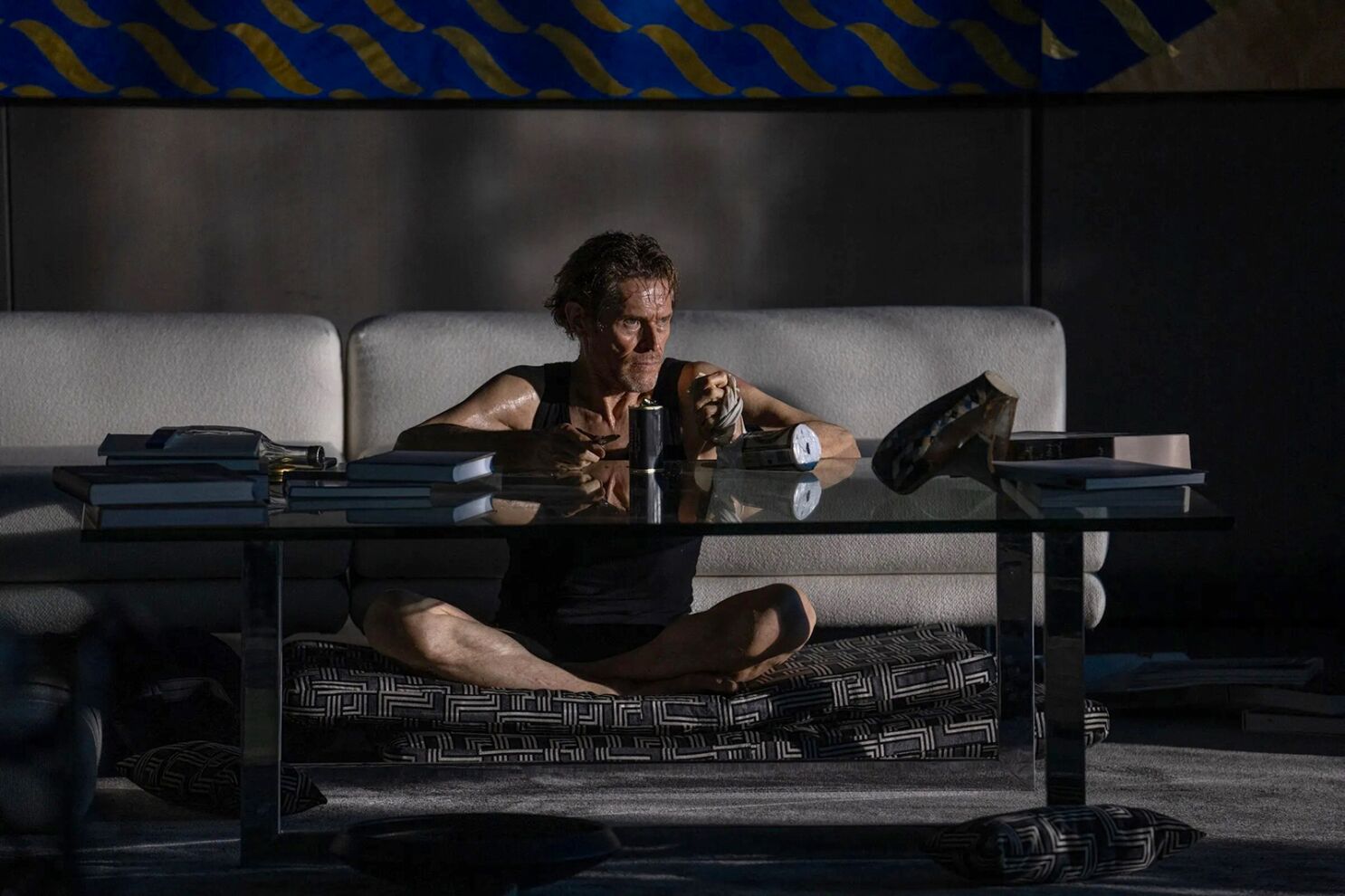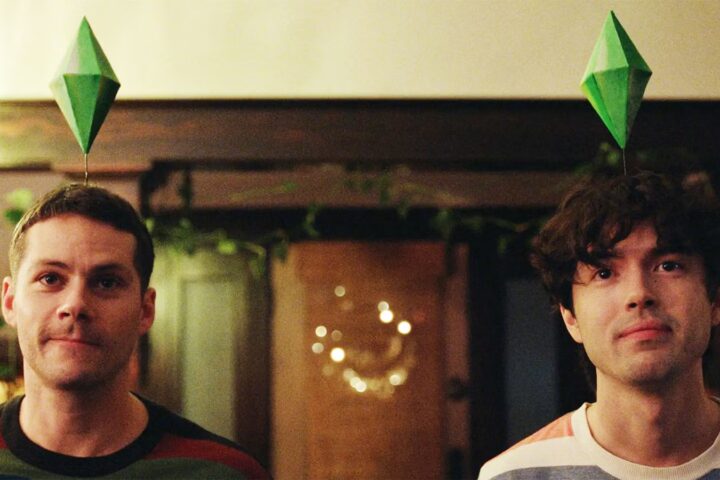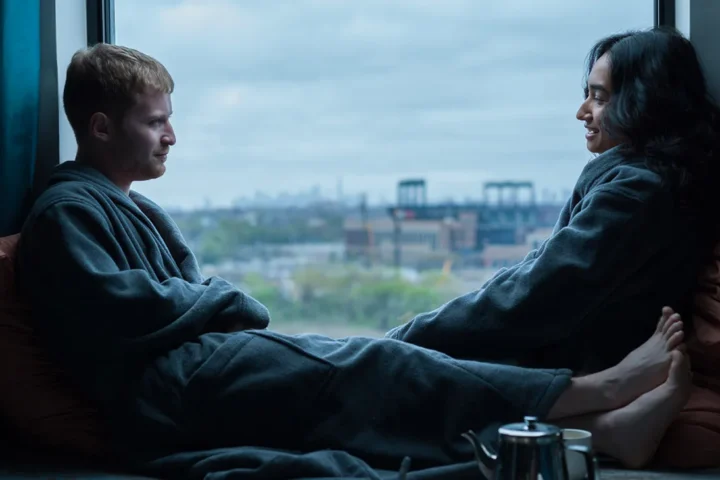A burglar specializing in high-end art theft finds himself trapped Inside a Manhattan penthouse in an effective, minimalist meditation on notions of creation and isolation set amidst a brutalist gallery of modern art works.
The picture’s opening narration offers a twist on the age-old question of being trapped in a burning house. If you could keep three items what would they be? For Nemo (Willem Dafoe), a professional art thief, his childhood answers were clear: his cat (which later died), an AC/DC album (lent to a friend and never returned) and his sketchbook, which he kept into adulthood because, he tells us, “art is for keeps.”
In a one man show of intense focus and self-possession, Dafoe’s thief in the night has one job—break into a lavish FDR tower apartment and lift a handful of multi-million-dollar paintings—until a malfunctioning security system renders him a prisoner at the scene of his crime. Abandoned by “Number 3,” his walkie talkie partner in crime, Nemo tries everything to escape—chiseling into a steel door, breaking through indestructible windows, screaming at the top of his lungs—but to no avail. With little more than toast and caviar to eat and limited water, the dilemma is immediately grave. Once the impossibility of escape becomes clear the stage is set for a gripping man vs. house face-off which ultimately drives radical, unexpected artistic inspiration.
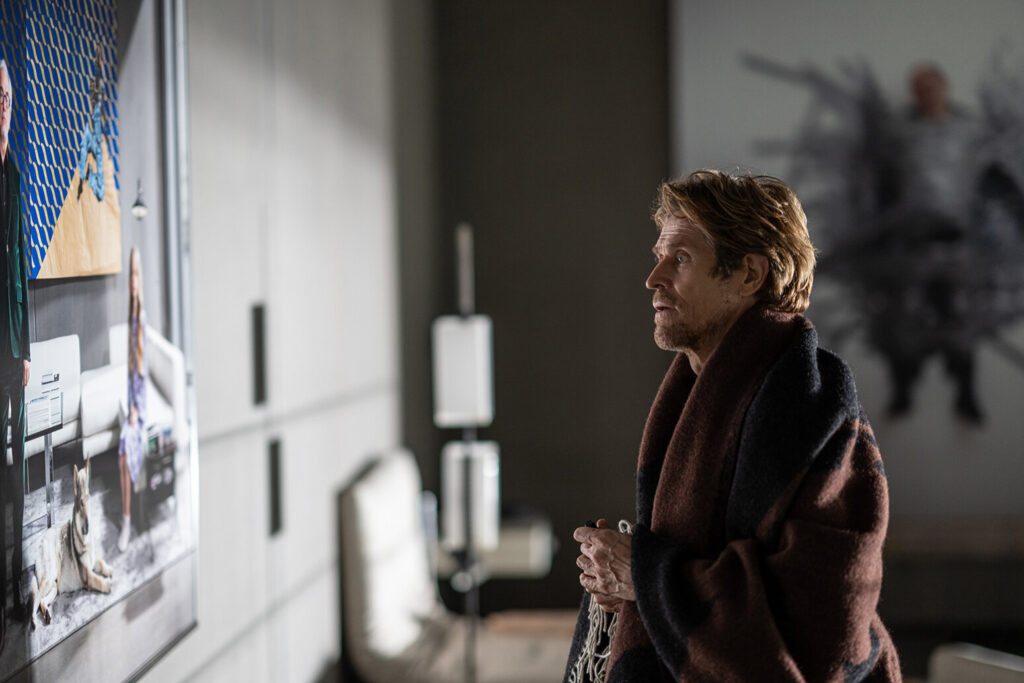
In a nod to the toll of urban lockdowns, Dafoe’s poacher finds himself swiftly, unexpectedly cut off from the rest of the world, a rat in a kill box maze as nourishment dwindles, running water is nonexistent and flight increasingly futile. Weeks pass and seasons change. His only company are the home’s increasingly appetizing tropical fish (who has been feeding them?) and a wounded pigeon on the outside terrace.
Will Nemo ever get the attention of a pretty young cleaner (Eliza Stuyk) who always seems to be just outside the soundproof front door? Should he be successful in triggering the sprinklers (a striking sequence of torrential downpour) will building security be alerted to his predicament? Can he punch through a vaulted skylight only reachable via a towering pile of furniture that becomes, in its own right, a bizarre art installation that may either save him or maim him? And what is he to do with no toilet paper?
Directed by Vasilis Katsoupis from a screenplay co-written with Ben Hopkins, Inside is a clever, claustrophobic survival thriller no less gripping than if set on Mt. Everest. As the picture progresses, it becomes less escape room thriller and more life or death drama. And while it may be a streamlined exercise lite on traditional character development, it gradually becomes clear that Nemo himself is a would-be (or perhaps failed) artist whose unorthodox inspiration is finally borne via a confrontation with madness and mortality.
Further to its survival story, Inside questions the construction of art, an often painful process, as well as who can afford to buy it. While purchase and possession may fall to well-heeled collectors, its creation may prove a life or death struggle for the creator; the artist must create, often in seclusion, to endure and survive. What happens later—that someone pays a high price tag for such a sacrifice—demonstrates the vast divide between the process of the creative and transaction of the patron.
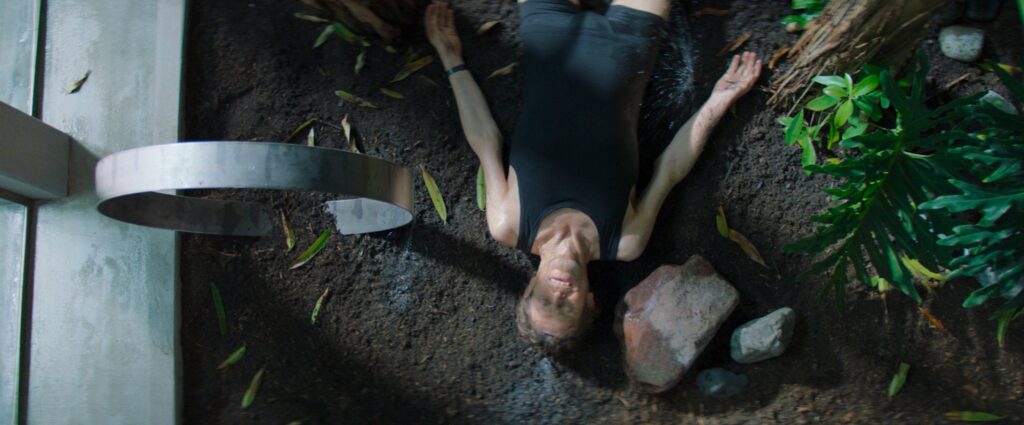
At times, Inside strains credulity. Would a clearly sophisticated cat burglar not wear a ski mask or gloves, potentially leaving fingerprints and DNA everywhere? Why doesn’t Nemo have a cell phone? With an ear-splitting, extended security alarm wouldn’t the apartment’s owner be alerted to a breach? Or at least front desk security? If gushing sprinklers were triggered by an alarm wouldn’t the fire department be alerted?
Better to just switch off and go along for the ride. Inside is a well-constructed piece of cinema, carefully calibrated and with unexpected surprises. The apartment itself is a feat of art and set direction with every corner, cabinet, hidden entryway, talking appliance and museum-worthy masterpiece effectively exploited in an array of anamorphic compositions. An aesthetic marvel, its staggering objets d’art and sophisticated systems, which include the malfunctions of a dramatically vacillating thermostat and a plant installation fed by dozens of tiny sprinklers (the only source of fresh water) achieve impressive and sometimes dark menace. Each time the concept feels as if it could flag, Katsoupis keeps his picture moving with new complications and rescue red herrings.
Contained environment pictures depend largely on the dexterity of their actors and camera to keep them lively and can be a hit or miss (note the recent lumbering, arid The Whale and Women Talking). By contrast, Inside works on desperate Dafoe’s singular performance, which will rank amongst 2023’s best and is consistently, eminently engrossing.
Recommended.
3 stars
